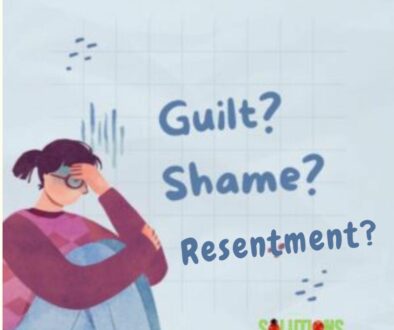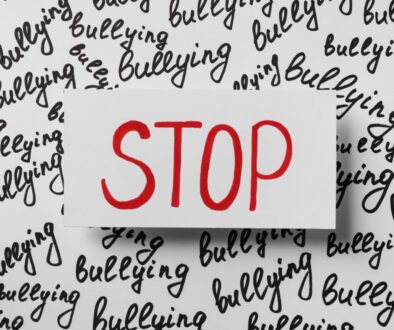Why Worry Your Life Away? There’s a Better Way!

When I ask my women audiences, “Please, put your hand up if your family or friends say to you, ‘Stop worrying!’” approximately a third of them raise their hands. Wow! What a waste of time, energy and focus. Yet, I have been guilty of being a worry wart myself. Many times I have asked “Why worry?” Maybe you have, too! Notice, that last sentence does not read, you have to.
Let us define worry as:
ruminating on thoughts, images, and imagined negative outcomes of a possible and future event. It is an attempt to problem solve a challenge that most often never happens.
Results of Excessive Worrying
Here is what happens in our minds, emotions, and nervous systems when we excessively worry.
The amygdala, a small almond-shaped structure located deep within the brain’s temporal lobe, plays a crucial role in processing emotions, particularly fear and anxiety. When you imagine danger the amygdala reacts as if it is actually happening. This triggers the body’s fight-or-flight response, leading to increased heart rate, deeper and heavier breathing, and the release of hormones such as cortisol and adrenaline into the bloodstream. Sometimes, a collapse response is triggered, experienced as a numbing sensation.
Worry, a form of anxiety, involves a repetitive cycle of negative thoughts about potential future events. Chronic worry can lead to an overactive amygdala, causing even minor stressors to trigger significant anxiety. This heightened state of arousal can contribute to the brain remaining on high alert, constantly searching for and anticipating potential dangers or challenges.
The physical and psychological toll of chronic worry can include headaches, bowel problems, sleep disturbances, a weakened immune system, loss of memory, and loss of appetite for food and/or sex. This distress can also affect relationships, leading to irritability or withdrawal.
Understanding the role of the amygdala in worry and anxiety highlights the importance of managing stress and calming this brain region.
What People say When Asked, Why Worry?
Here are some of the top sources of Americans’ worry and their statistical odd of actually happening.
- Odds of dying in a shark attack: 1 in 3.7 million
- Odds of dying from drowning: 1 in 1.134
- Odds of dying from being struck by lightning: 1 in 79,746
- Average annual risk of being killed in a plane crash: 1 in 2 million
- Average annual risk of being killed in a car crash: 1 in 7,700
- Lifetime odds of being killed in an assault involving a gun: 1 in 32. This statistic is scary.
Note: My understanding is that Canada’s worry ratios are lower.
Note Two: On January 30, 2024, I received an email from Patricia Gomez of the World Animal Foundation. It read, “you mentioned that there are “1 in 3.7 million” chances of shark attacks. Based on our most recent data of 2022, this figure has been updated to 1 in 4,332,817.”
Consequently there may be other statistics above that are incorrect. But let us not miss the point; often we worry unnecessarily or about situations we have no control. Most of my clients’ worry thoughts are about their loved ones, with whom they have influence but no control.
Why Worry?
Consider the lyrics of Why Worry from the British rock band, Dire Straits:
There should be laughter after pain.There should be sunshine after rain.These things have always been the same.So why worry now?
Makes sense, eh? In Canada, the late Alberta Governor General, Lois Hole said, “Ninety-nine per cent of things you worry about don’t happen; the other one percent you can’t do anything about, so why worry at all?” Yet worry continues for many in a chaotic and challenging world. If you identify as a worry wart, please consider exploring some anti-worry practices described below.
10 Ways to Stop Worrying
Techniques such as mindfulness, Inner Child Work, self-compassion, cognitive-behavioral therapy (CBT), and relaxation exercises can help reduce amygdala activity and alleviate chronic worry, promoting better emotional health and well-being. Given the pervasive impact of worry on health and relationships, addressing it is a crucial goal.
To manage worry and anxiety try out these alternatives from your Compassionate Adult Self :
- Make a list of the scary, future events you worry about. The fears might be items such as your child will marry that loser or you might die from lung cancer. Keep writing until you have ten or more events you fear. Then score each item from (0) I have no control to (10) I have total control. Where you have significant control lower the risk by taking action. It doesn’t matter what action. On action might be to write down a Plan A and a Plan B. Where you have little or no control let it go.
- Become assertive with the amygdala, “I hear your message, Amygdala. But you’re giving me a false alarm. I’m actually safe right here, right now. I get to choose, what I focus on and do.”
- To let go, notice your thoughts and your body distress, take in a big breath and exhale while thinking, “Let it go!”
- Read Richard Carlson’s little book, Don’t Sweat the Small Stuff.
- Post the serenity prayer where you can read it daily. Grant me the serenity to accept what I cannot change, the courage to change what I can, and the wisdom to know the difference.
- Contain your worrying thoughts by disciplining yourself to only worry while sitting in a particular spot. Choose an uncomfortable Worry Chair. Sit there until you are ready to focus on something productive
- Practice optimistic thinking. Ask yourself, “What is the best that could happen?
- Focus on all the reasons you have to be grateful.
- Volunteer to help those who have a better reason to worry than you.
- Consider seeking professional counselling to help avoid worry turning into anxiety.
Here’s a bonus–a 1.41 minute video called How to Stop Worrying: Help for Worry Warts!
I hope your answer to why worry has shifted. If you seldom worry or have developed strategies to better manage your anxious worrying, please share with us. Ok?
Please check out these related blogs:
Avoid an Anxiety Attack with Five Ways to Calm
Mind Your Stress! Are You Frantic, Frenzied or Simply Fried?




April 17, 2023 @ 5:38 pm
Great message, Patricia.
These are the same things I share with others.
Take a look at the 2nd line of your Serenity Prayer – I think you have ‘cannot’ where you mean ‘can’.
The only good thing we can associate with worry comes if we take a moment to examine if there is something we can do to make a change. If we can’t make that change, then there is no point in worrying. Worry clutters our mind and uses our valuable energy – most of us don’t have energy to splurge on worry.
April 25, 2023 @ 1:22 am
Hi Elaine,
Thank you for taking the time to leave a comment and catching my typo error on the Serenity Prayer. I like your phrase, “clutters our mind’ as it is accurately descriptive. Thank you for weighing in!